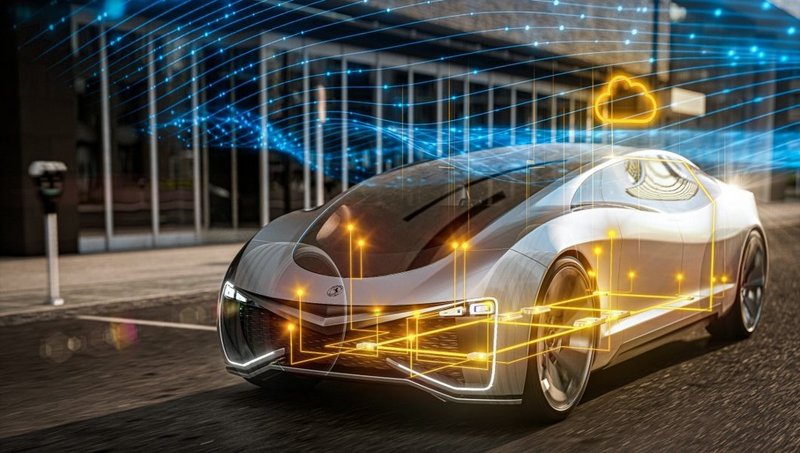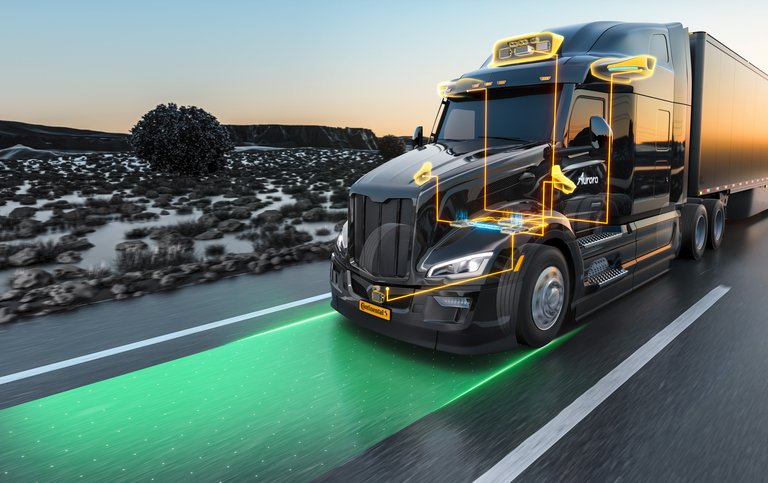Continental is shaping the mobility ecosystem: from the vehicle to the cloud
- The Software-Defined Vehicle (SDV) is the next evolutionary step in vehicle development
- From high-performance computers to development environments in the cloud: Continental offers comprehensive solutions for the entire ecosystem around the software-defined vehicle
- Software functions from Continental create an increasingly safe, exciting and autonomous mobility experience in the smartphone on wheels
Frankfurt, June 14, 2023. In all areas of society, connectivity and digitalization in mobility are advancing rapidly. At the same time, the proportion of software in vehicles is constantly increasing. Due to the great leaps in development in the SDV, more and more functions in the vehicle are controlled, monitored and maintained by software. According to various analysts, the market volume for software-based vehicle functions and services is expected to reach 640 billion US dollars by 2031.
At the TechShow, Continental will be demonstrating how this development is accompanied by a fundamental change in vehicle technology. Increasingly, software determines the functions of the vehicle and the experience for its users. The previously self-contained hardware-centric architecture of the vehicle is being redefined. It aligns itself with the software and opens up thanks to connectivity. Software and functions can thus be updated throughout the entire life cycle of the vehicle. The result is a comprehensive ecosystem from the road to the cloud. The automotive industry refers to this as a software-defined vehicle. For the drivers, the vehicle feels more and more like a smartphone on wheels: it offers an increasingly safe, exciting and autonomous mobility experience.
"At Continental, we offer hardware, software and service modules to get the software-defined vehicle on the road together with our customers. We are shaping the entire ecosystem from the road to the cloud and, with data-driven development, testing and validation tools or solutions for cyber security, also ensuring that we close the circle from virtual to real," says Gilles Mabire, CTO of Continental Automotive.
From the drawing board to the road
Without a powerful software environment, future trends in vehicle development cannot be implemented. These include, among other things, systems for greater safety in and around the vehicle, the integration of entertainment and infotainment offerings into the vehicle, and the autonomization of vehicle operation. Continental offers OEMs high-performance and scalable server zone architecture solutions for SDVs. A central component of this architecture are highly integrated domain-specific and cross-domain high-performance computers (HPCs). Thanks to Continental's modular hardware and software components, vehicle manufacturers benefit from customer-specific HPC solutions that can be flexibly adapted to the respective requirements. Zone control units are another key component for optimizing the vehicle architecture in the SDV. By consolidating vehicle functions into physical zones, they reduce the complexity of the vehicle network and thus the costs.
SDVs: How cloud and road are growing closer
Instead of permanently installed control units in the vehicle, many functions will in future be controlled and updated via software solutions from the cloud. In order to be able to transfer data to and from the cloud, Continental develops powerful software for processing, managing and distributing this data. With the Continental Automotive Edge Framework (CAEdge), Continental is relying on a modular solution. Together with Amazon Web Services (AWS), Continental established a new approach for the efficient development of software for service-oriented vehicle architectures in the automotive industry. CAEdge provides a virtual workbench with numerous options for developing, deploying, and maintaining software-intensive system features. Thanks to this architecture, functions can be subsequently imported into the SDV as an over-the-air update.
With Function as a Product (FaaP), Continental already offers the complete integration of predefined functional applications. The OEM can choose from a range of solutions from Continental's functional portfolio such as window regulators, motion control software for automated driving or remote parking. In this way, Continental enables vehicle manufacturers to bring solutions to market faster, develop the software-defined vehicle more cost-effectively, and provide new functionalities over its entire life-cycle.
How SDVs are driving the trends in car manufacturing of the future
Many of the current development trends in vehicle construction cannot be implemented without the use of a highly developed software architecture. For example, when it comes to safety in vehicle operation. With the rise of autonomous driving functions, the growing complexity of autonomous driving can no longer be managed smoothly by adding more hardware. Continental offers the third generation of Holistic Motion Control (HMC) software as a command center. This host-independent application software can control all actuators available in the vehicle, such as the powertrain, brake and steering systems, spring and damper systems, and thus implement the longitudinal, transverse and vertical movements of the vehicle centrally and harmoniously. The HMC software is a uniform interface between driving functions and specific vehicle/actuator setup, which works centrally and, thanks to its modularity and scalability, can be flexibly integrated into different vehicle architectures. The information generated by the HMC software can be used as input for UX applications to make the driving experience harmonious, but also individual. Formerly individual systems and ECUs thus become function blocks that are hosted on a cross-domain-capable server.
Furthermore, driving safety will benefit from the innovative use of vehicle data in the future: algorithm-based, intelligent digital solutions interpret data to create new values. Continental Automotive has developed sensors and uses them as a data source to monitor safety elements such as tire wear and the status of the 12-volt starter battery. Continental is able to transform sensor data into comprehensive and predictive information.
Another driver for the SDV market is interior functionalities. The cockpit becomes a "living room" with more and more digital functions, which are mainly used at home, being integrated into the vehicle cockpit. These are, for example, the entertainment, infotainment or gaming segments. The extent to which SDVs can become a "living room" will be presented by Elektrobit. Elektrobit designed the innovative software architecture for the AFEELA prototype from Sony Honda Mobility (SHM). This allowed SHM to leverage Sony's entire ecosystem to take the user experience to a new level. Elektrobit also developed the cockpit system. This included the software for Qualcomm's high-performance computing (HPC) processors and the software stack to the UX design for all cockpit displays. In addition, Elektrobit integrated the cockpit system into the vehicle. This included all software and hardware components as well as applications from Sony and its partners.
SDV is also a central prerequisite for the field of autonomous driving. This is only possible by combining a cross-domain software architecture, centralized hardware components and a secure cloud connection. Partnerships are a strategic pillar in this area to achieve autonomous mobility safely, quickly and cost-efficiently. Together with Ambarella, Continental is developing complete systems based on artificial intelligence, offering vehicle manufacturers the greatest possible flexibility for integration into the latest vehicle models. The system solutions are based on Continental's broad sensor portfolio and control units, and Ambarella's high-performance, energy-efficient AI chipsets, along with a full software stack comprising modules from both companies. Just recently, we expanded the scope of our complete system solutions from Level 2+ to highly automated, into autonomous L4 driving. The first business award for these system solutions from Continental and Ambarella is as a complete Level 4 fallback system.
With its second, exclusive partner, Aurora, Continental is realizing autonomous trucking systems for a wide usage. The first joint series launch is expected in the USA in 2027. Continental is supplying the entire hardware system and contributing a new, complete fallback system. In the unlikely event of a failure of the autonomous primary system, it serves to ensure that the driverless truck continues to take over the driving task and continues to drive to the next possible safe position. Continental will manage the entire life cycle of the autonomous hardware solutions supplied for the Aurora Driver and is paid per mile of the system driven.
Not doable without intelligent hardware
Even though the proportion of software in modern vehicles is continuously increasing, it also requires intelligent hardware components that meet the software requirements. Continental's high-performance computers (HPC) and zone control units play a central role here. In the vehicle, the powerful high-performance computers provide the computing power to exploit data from sensors and control units, while the telematics unit connects the vehicle with the environment and the cloud. As a result, new functions and updates for firmware or cyber security can be installed over-the-air throughout the entire life cycle. The zone control units take on the role of a communication gateway and act as intermediaries between high-performance computers, vehicle sensors, actuators and electronic control units. In addition, they ensure intelligent and safe power distribution and ensure the reliable execution of real-time vehicle functions across domains.
Cyber security is becoming a key technology
With connectivity and the primacy of software use, vehicles and drivers are also exposed to greater cyber risk than before. With multiple apps and screens, data protection and privacy will be crucial for consumers in their vehicle as well. Continental's Automotive Cyber Security application in cooperation with the Israeli cybersecurity specialist PlaxidityX (formerly Argus Cyber Security Ltd.) supports OEMs and suppliers in complying with security regulations. In this way, PlaxidityX and Continental protected against cyber attacks in SDVs.
Continental develops pioneering technologies and services for sustainable and connected mobility of people and their goods. Founded in 1871, the technology company offers safe, efficient, intelligent and affordable solutions for vehicles, machines, traffic and transportation. In 2022, Continental generated sales of €39.4 billion and currently employs around 200,000 people in 57 countries and markets.

Ilona Tzudnowski
Media Spokesperson Software Architecture and Network Solutions
Continental Automotive



